Differencing within Families and Localities
Adapted from an article by Michael Ray
In his fine book, The Knight in Medieval England 1000-1400 (Thrupp, 1996), Peter Coss explains, discusses and illustrates the differencing of heraldic arms within families, local loyalties and feudal relationships. I am grateful to Peter for permission to use some of his illustrations in this article.
The Earls of Chester
The image opposite shows the similarities between arms associated with Chester. The arms of the earldom of Chester were azure, three garbs or – a garb being a sheaf of corn. The Lacys, who were hereditary Constables of Chester, bore party per pale gules and azure, three garbs or. Different members of the associated Segrave family bore gules, three garbs or and sable, three garbs argent. When the Norman earldom of the Blundevilles ended, the Lacys and Segraves abandoned the garbs in favour of lions rampant; the Lacys chose or a lion rampant purpure whilst the Segraves opted for sable, a lion rampant argent wearing a crown.
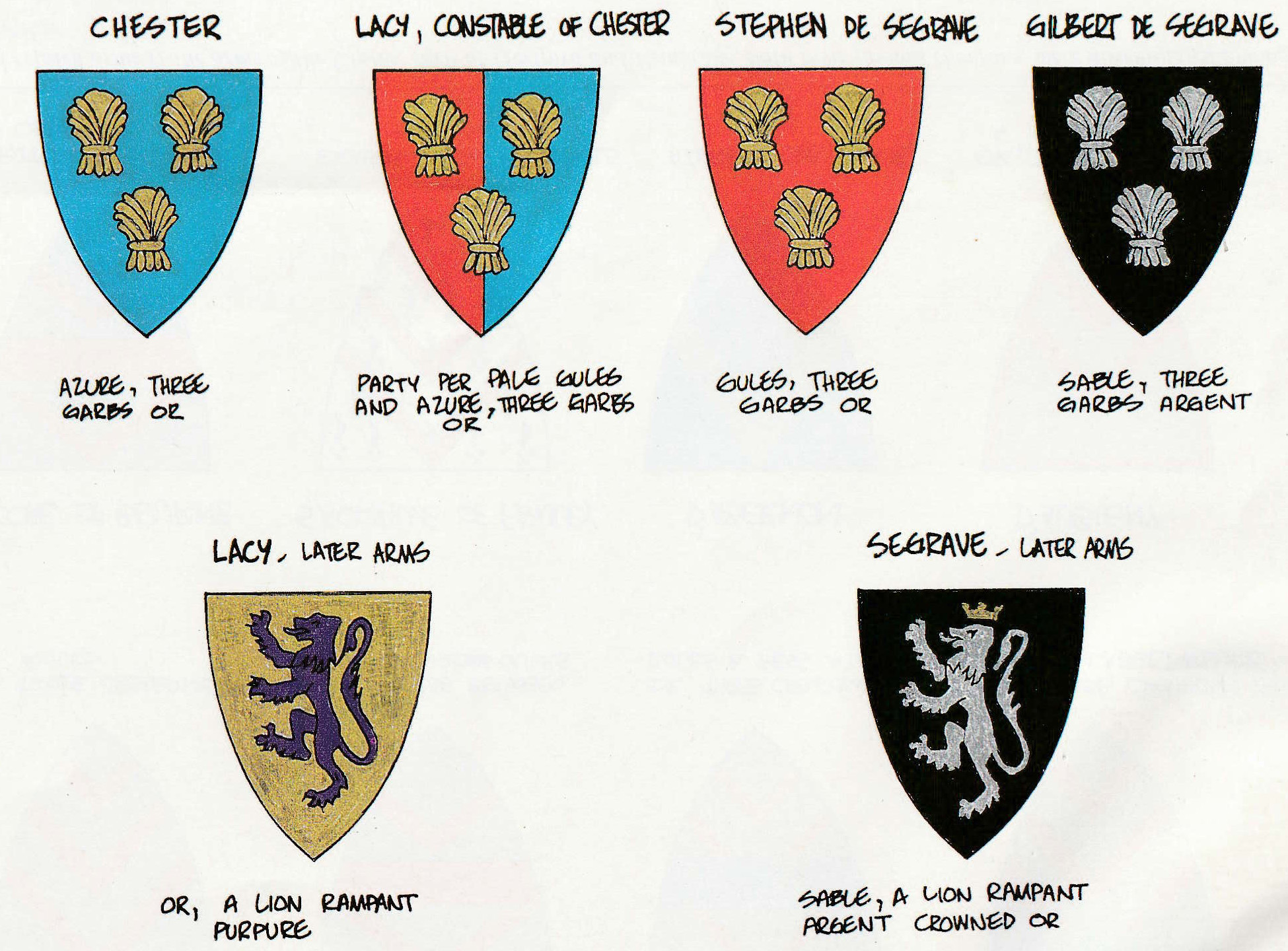
The Clares
A far wider group of families drew inspiration from the comital family, the Clares, who were to become earls of Gloucester and Hertford. The main feature of the Clare arms was the focus on chevrons. The family itself bore or three chevrons gules. Their East Anglian neighbours and descendants, the FitzWalters of Dunmow, Essex, discarded the central chevron for a fess gules. The Monmouth family of Gloucestershire used the main Clare arms but changed the chevrons to slimmer chevronels and imposed a fess azure overall. Another Essex family, that of Montfichet, used the original Clare arms with a label azure; NB this was well before the label became specifically associated with the eldest son. These two families were descended from the sisters of Gilbert de Clare (d.1136). Other relatives of the Clare family also used arms derived from the comital lords. They included Peche of Bourne in Cambridgeshire, Sackville of Fawley, d’Abernon (Surrey) and d’Aubigny. All four of these families used a chevron and d’Aubigny used the same tinctures – or two chevrons and a bordure gules. Peche’s arms were the same as FitzWalter but the shield was changed from or to argent. The Sackvilles used chevronels gules but on an ermine shield whilst d’Abernon adopted a simple chevron gules on a field azure.
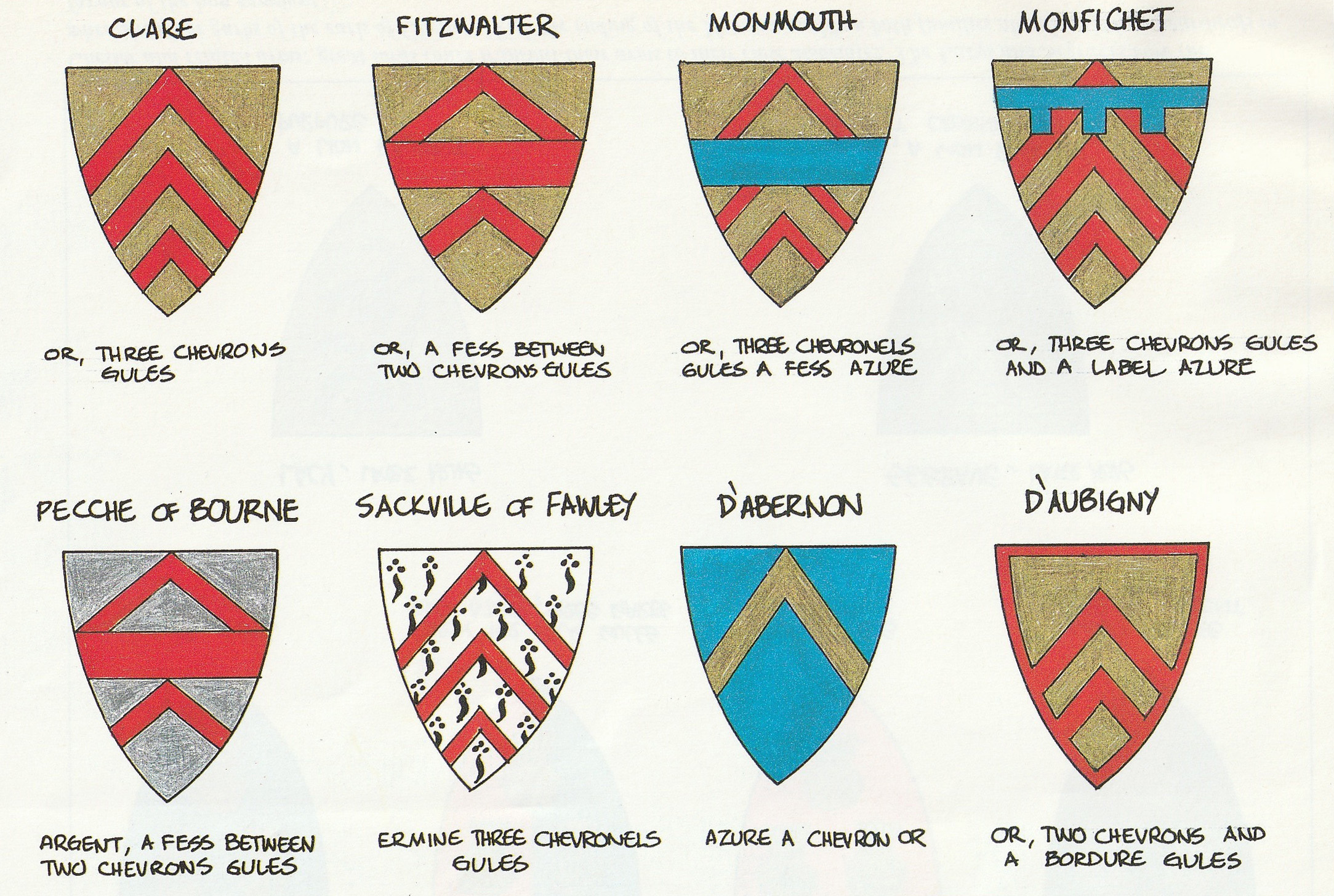

Coss adds another five families who were tenants of the Clares and have associated arms. From the Clare lordship of Tonbridge in Kent came the Criol and Hardres families. Criol used the same Clare tinctures and chevrons but added a canton gules whilst the Hardres were less similar: a chevron or being placed over gules a lion rampant ermine. The other three families all used the original Clare arms of or three chevrons gules. The Romneys added a canton gules charged with three leopard’s faces or. The Orlasstons had a similar canton but with a lion passant and the canton of the Hanlos bore a crescent argent.
The Hastangs
In a final section, Coss looks at the Hastangs family of Staffordshire and Warwickshire. The original arms were azure a chief gules, overall a lion rampant or. He illustrates these arms together with four interesting variations for other knights of the family.
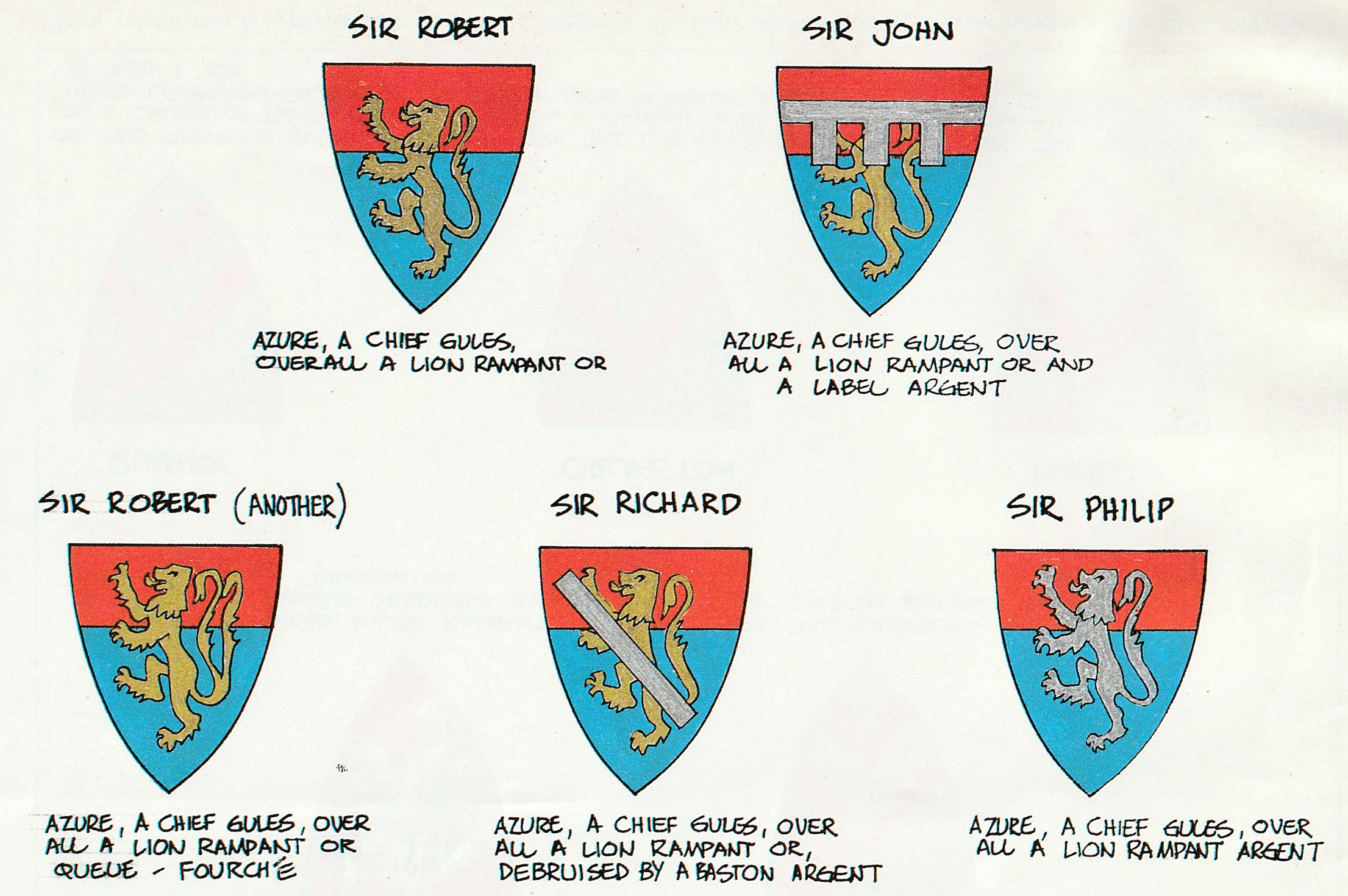
Related Coats of Arms in Switzerland
The armorial map opposite comes from Encyclopédie Illustrée du Pays de Vaud; L’Histoire vaudoise (1973). It shows a comparison of arms related to family and locality from what is now western Switzerland, primarily in the canton of Vaud. In the thirteenth and fourteenth centuries, the Pays de Vaud was part of the Holy Roman Empire but was within the sphere of interest of the expansionist Counts of Savoy.
There are 24 coats of arms on the map. What is remarkable is that nine of them use paly shields with vertical stripes and, of these, six are paly argent and azure and their main charges are gules. There is another family fitting this pattern that is not included on the map, as it came from Strattlingen further to the east. This family bore paly of six argent and azure, on a bend gules three cinquefoils. The bend gules was sometimes charged with eagles or mullets and sometimes it was left plain. Another missing family is that of Vuipens which was in the canton of Fribourg to the east. Two other families used arms that were paly gules and or. The Montagnys added a chief argent; the Estavayers included a fess argent.
The eagle of the Empire seems to have influenced the arms of Prangins, Cossonay, Oron and Zahringen. The simple cross of the house of Savoy is reflected in the arms of Mont and Goumoens. Gules was used for the shields of the Montbeliard, Chalon, Montricher, Gruyere and Corbieres families. The last two difference their arms by puns on their names: Corbieres has a corby or raven and Gruyere has a crane, a gru in French. Lions are rare being restricted to the Gingins, Palezche and Blonay families.
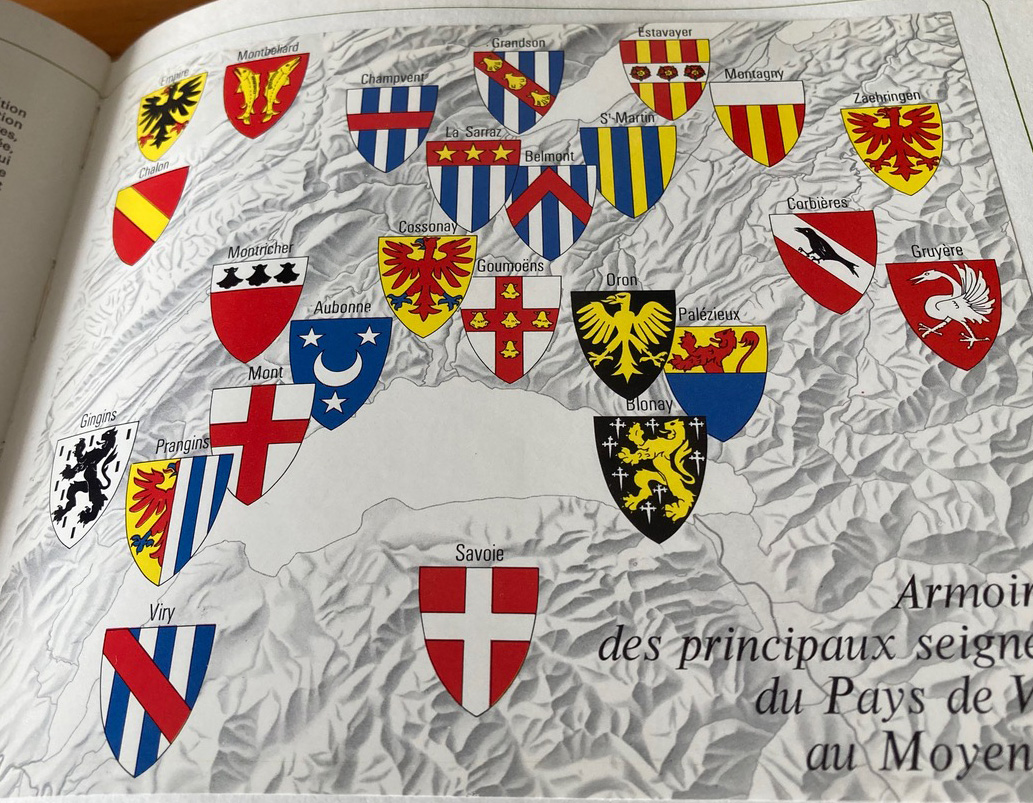
The Grandsons in England
When Eleanor of Provence married king Henry III of England in 1236 she brought with her a large retinue of knights, gentlewomen and retainers. Among these was her uncle, Peter II Count of Savoy who like many others was granted significant lands and titles. Not surprisingly these ‘Savoyards’ were very unpopular. Back in Vaud Peter had received strong support from the nobility, so he was happy to encourage some of them join him in England. One family that took full advantage of this opportunity was the Grandsons, known in England as the Grandisons. Pre-eminent among these was Otto de Grandison (d.1328) who became Edward I’s longest and best friend.
In Vaud, the original arms of the Grandsons was just paly argent and azure – vertical stripes – but one branch of the family added a bend gules. Peter de Grandson (d.1263), the Lord of Grandson, differenced these arms by placing three escallops or on the bend. These were the arms subsequently borne in England by his famous eldest son, Otto. A younger son, William, changed the escallops to eagles displayed and when his own son John was appointed bishop of Exeter he replaced the central eagle with a mitre.
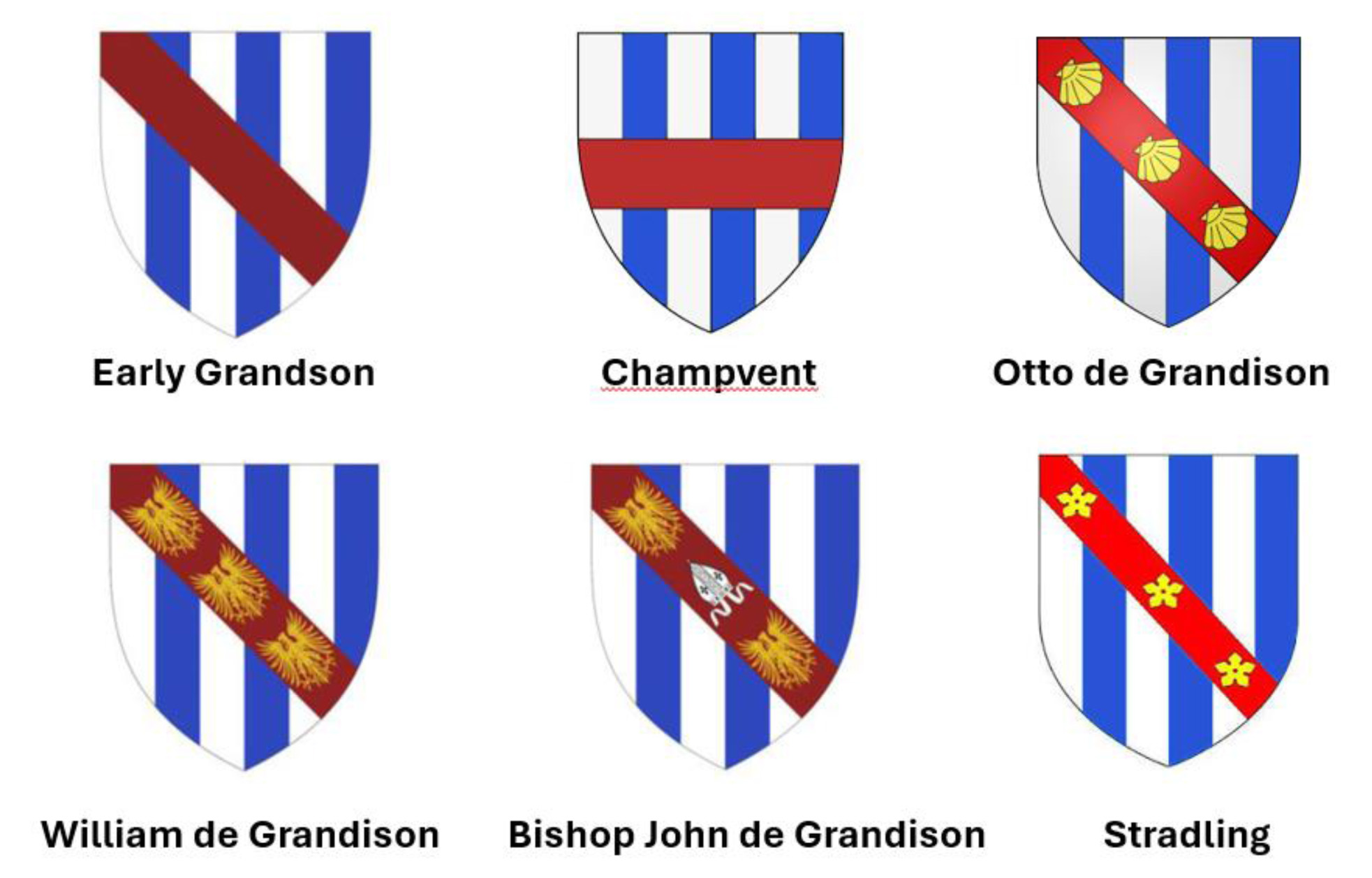
Peter de Grandson had a brother Henry, lord of Champvent, a place very close to Grandson. Henry differenced the family’s coat of arms by replacing the bend gules with a fess gules. His son Peter de Champvent probably came to England with his uncle Peter and cousin Otto de Grandison. He became very successful, serving as a steward in the royal household and later becoming Edward I’s chamberlain.
Another Savoyard, Sir John de Stradling married a daughter of Otto de Grandison. He subsequently adopted a version of Otto’s arms with the escallops replaced by cinquefoils.

The tomb of Peter de Grandison (d.1358), son of William de Grandison, in Hereford cathedral with eagles on the bend gules.
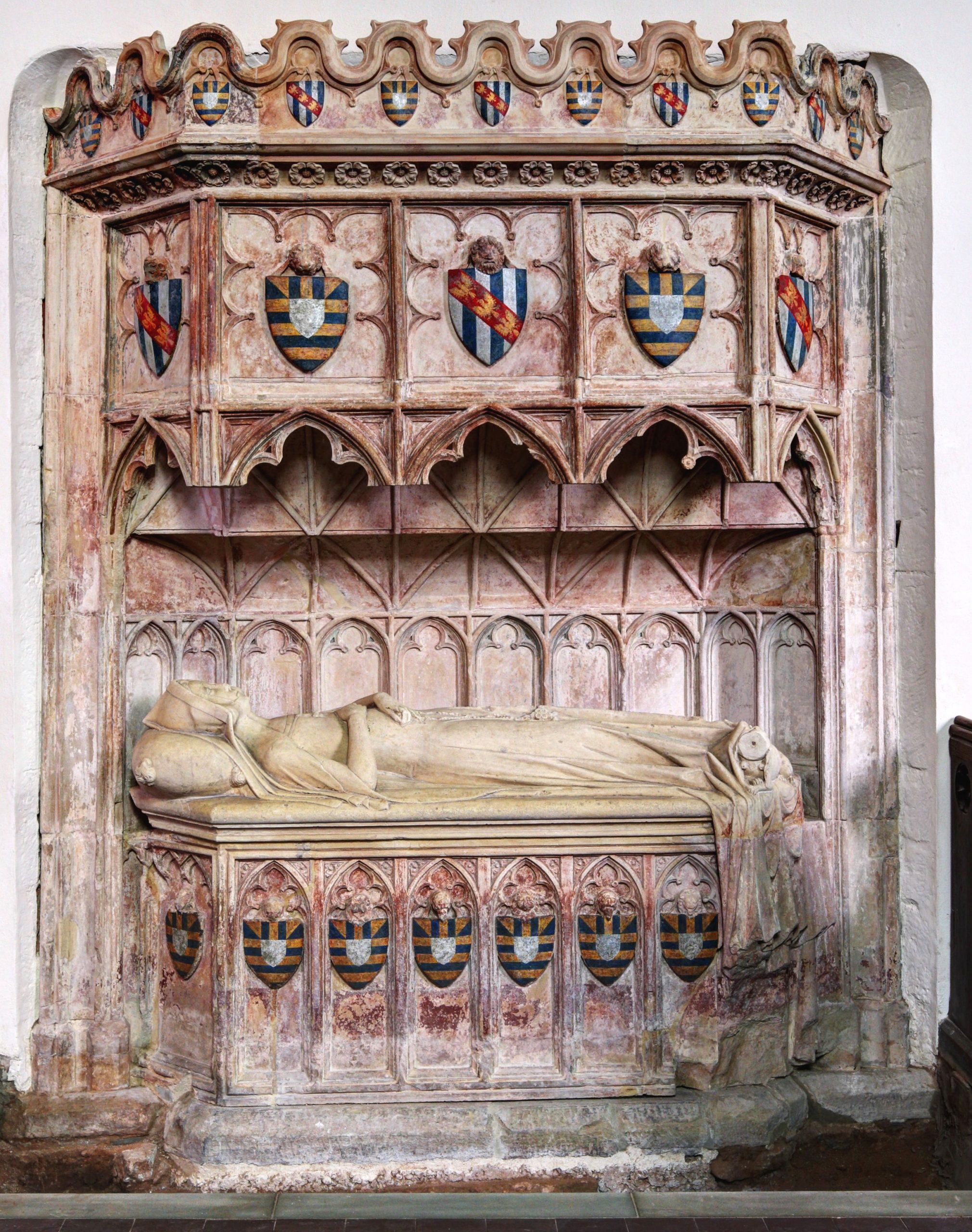
The superb tomb of Blanche Mortimer, wife of Peter de Grandison, in Much Marcle, Herefordshire.
Leave A Comment